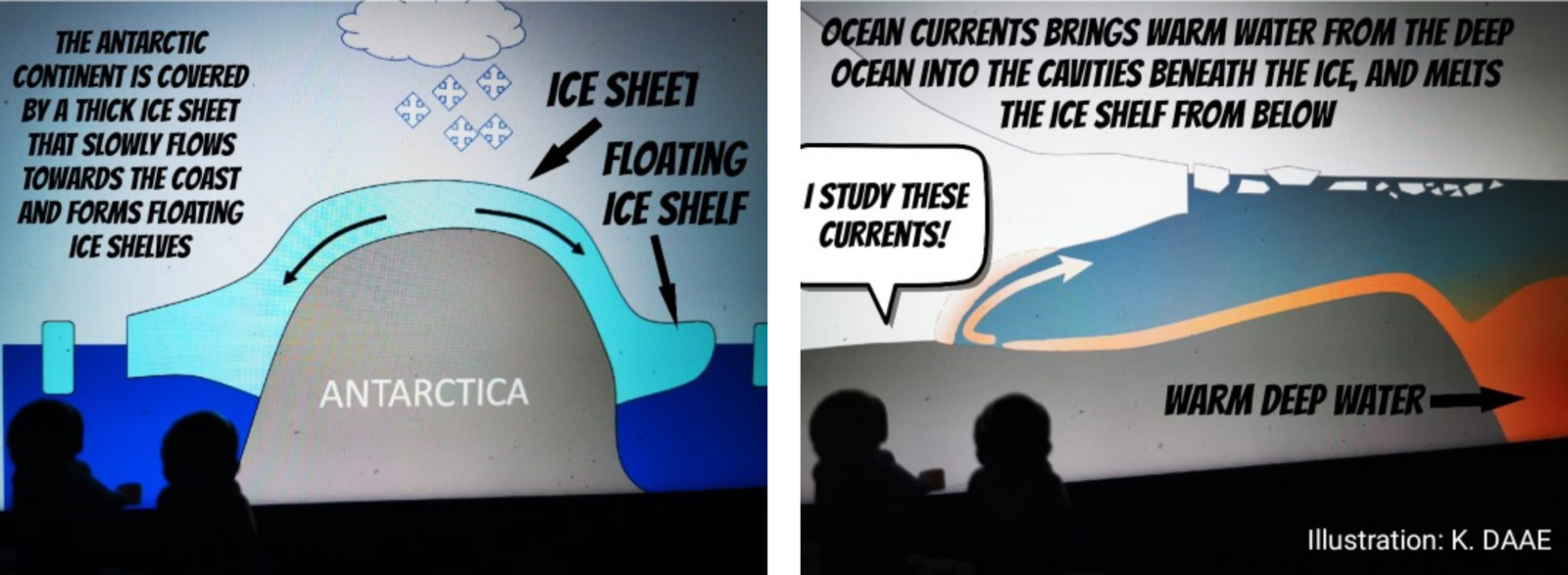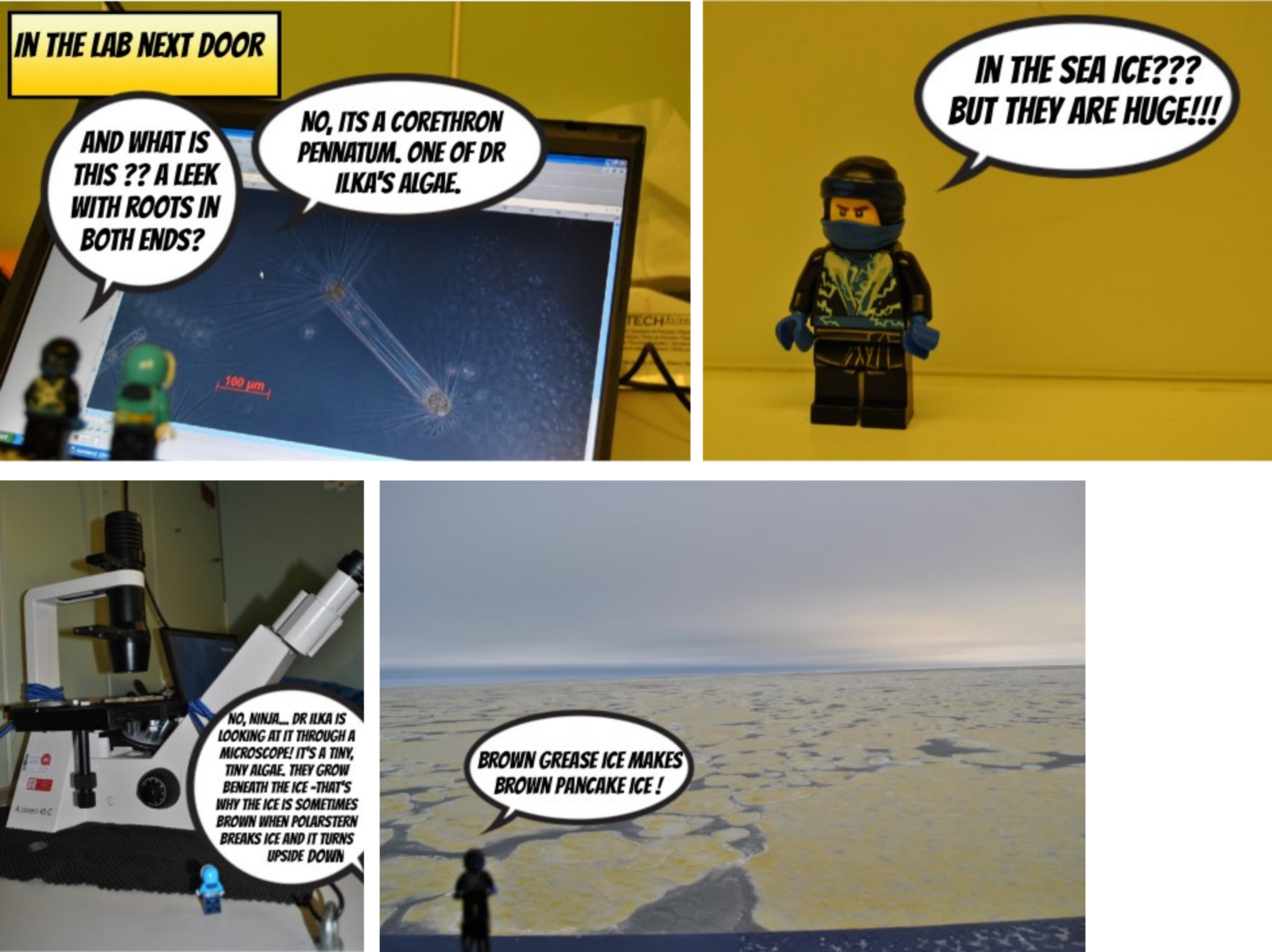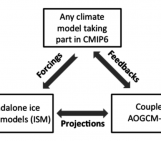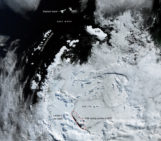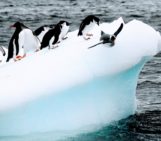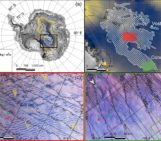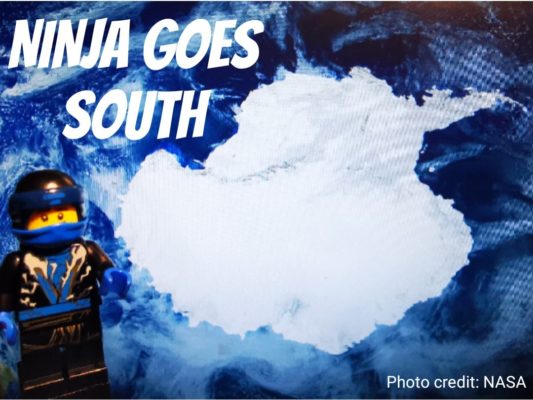
Hello there! I’m Ninja – a curious little LEGO-figure who doesn’t know much about the cryosphere, but who’s learning! Maybe you read about me in the blogpost by ice sheet modeler Petra Langebroek a few years ago? She brought me to the ice-core drilling camp called EASTgrip, on top of the Greenland icesheet. Together, we wrote a photo-novel to tell her sons and all of you about life and science at EASTgrip. Well, I could finally be back in the polar regions! Last winter I got the possibility to go travelling with a colleague of Petras, Elin Darelius from the University of Bergen (Norway). We went all the way to Antarctica, joining a research expedition on the German icebreaker Polarstern! We wrote a continuation of the photo-novel, and I thought I’d share some of it with you here!
Let’s begin!
Travelling during the pandemic year of 2021 was not easy, and of course we ended up in a looong quarantine… for sixteen (16!) days, I was locked up in a hotel in Germany, together with the other scientists that were to join the cruise, the crew of Polarstern, and the Lufthansa crew that was to fly us to the Falkland Islands where we boarded the ship. Elin worked a lot on the computer – I think she was writing a proposal – and whenever she was on the phone with family or colleagues, she would walk back and forth between the door and the window, the door and the window, the door and the window… it drove me crazy! I much preferred when she brought out the skipping rope, or when she practiced on her new ukulele, or when we watched a movie together.
Finally in the Antarctic
Now, Elin is a physical oceanographer – so she taught me a lot about how warm ocean melt the floating ice shelves from below…
…and about how they use ocean moorings and Weddell seals (!) to study these currents.
Antarctica: cryo-diversity at its finest
There was also a lot of “cryosphere” around! Once I got over the disappointment that the Antarctic “pancakes” were not edible, I very much appreciated their beauty. And I learnt that there are many other types of ice: grease ice, shruga – and even dragon skin ice (look here if you don’t know what dragon skin ice is)!
One morning, while looking out the portholes, the pancakes in the sea were all brown and yellow, like real pancakes! The biologists soon found out that it was a bloom of ice algae that colored the ice. I even got to look in the microscope myself; it was truly amazing to see all the small, small things that actually live their whole life in the ice! Most of them only looked like boring small squares (I hope the biologists don’t read this), but the ones that looked like miniature leeks with double roots (Corehtron Pennatum) were truly impressive! I’ve read afterwards that algae can also live on snow!
And what about gigantic icebergs?
There was a lot of attention in the media back home about us circumnavigating the large iceberg A74 (here another interesting story about a huge Antarctic iceberg) that broke off from the Brunt ice shelf while we were there. Personally, I never understood what the fuss was about – the large iceberg looked just like the ice shelf on the other side… and I wasn’t even sure about which one was which!
I much preferred sailing through the iceberg “graveyard” around South Georgia on the way back – now that was a really spectacular view!
And now?
I think Petra and Elin really like me, because they are planning to make their stories into real books! I heard they even got money from the Norwegian Research Council to have it translated to Norwegian, and that they will collaborate with the “Climate club” in the elementary school at Landås in Bergen to do so. The books will then be distributed to school libraries – Oh, I really look forward to meeting all those Norwegian kids! And who knows, maybe there’s also another scientific adventure around the corner? See you later!
Edited by Francesco Avanzi and Giovanni Baccolo
 Ass. Prof. Elin Darelius is a physical oceanographer working at the Geophysical Institute, University of Bergen, Norway and the Bjerknes Centre for Climate research. She studies the water masses and the currents of the Southern Ocean and the interactions between the ocean and the floating, Antarctic ice shelves. She tweets as @DareliusElin.
Ass. Prof. Elin Darelius is a physical oceanographer working at the Geophysical Institute, University of Bergen, Norway and the Bjerknes Centre for Climate research. She studies the water masses and the currents of the Southern Ocean and the interactions between the ocean and the floating, Antarctic ice shelves. She tweets as @DareliusElin.




